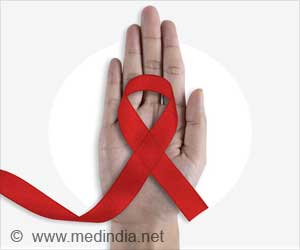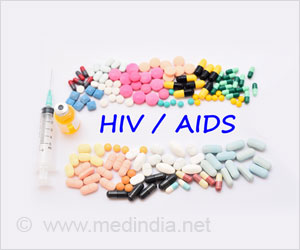South Africa is trying to cope with the HIV/AIDS epidemic by launching the world’s biggest campaign against the virus.
South Africa is trying to cope with the HIV/AIDS epidemic by launching the world’s biggest campaign against the virus.
An estimated 5.4 million of South Africa's 48 million people have the virus — the highest total of any country. But after years of pressure from activists, South Africa is now implementing a massive programme to combat the problem.The number of people receiving therapy has more than tripled in just two years, from 143,000 in March 2006 to 456,000 at the end of February, according to government statistics. That's still only half the estimated 900,000 who have developed full-blown AIDS and need treatment, but a national plan launched a year ago aims to provide care and treatment to 80 percent by 2011 and halving the number of new infections.
The abused and orphaned children in Pastor Julius Bonani's church in Cape Town are the face of an AIDS epidemic that is killing nearly 1,000 South Africans a day and infecting even more.
And yet, the 18 children who live in Bonani's heartbreak home, in a shanty town filled with dust and despair, also personify a tortuous journey toward hope in the country most affected by the AIDS crisis. After a decade of denial under a president who has disputed the cause of AIDS and a health minister who thinks garlic is a remedy, there is growing political will to tackle the crisis.
Some 40,000 children nationwide are receiving AIDS drugs, including the 18 in Bonani's church — children such as Thandiswa, who was found sucking at the wizened breast of her dying mother, her dead twin at her side. And Abina, who still bears the scars of cigarettes her drunken father extinguished on her skin in fury that she had HIV. And Siphosethu, who was abandoned just after birth, smothered in rags, crawling with ants and reeking of festering sores.
They are being transformed into bubbly, bossy 6-year-old Thandiswa; giggling, wriggling Abina; and Siphosethu, whose name means "our gift." They are given their medicine every day with a helping of porridge and a big dollop of love.
Advertisement
More than 90 percent of pregnant women with HIV in the Western Cape province around Cape Town now receive drugs to prevent the virus from passing to their unborn children. But in poorer areas like the rural Eastern Cape, the number of women on medication is nearer half, reports news agency AP.
Advertisement
Mortality rates for women and young children are higher now than they were in 1990, before the end of apartheid, according to a study by the Medical Research Council, which said South Africa was one of only 12 countries suffering such increases.
The report, titled "Every Death Counts," said at least 260 mothers, newborns and children under 5 die every day in South Africa, with HIV, AIDS and related infections like tuberculosis and pneumonia responsible for about two-thirds of the deaths.
After four years of delay, Health Minister Manto Tshabalala-Msimang in February issued guidelines that comply with World Health Organization recommendations: Doctors should give two drugs, nevirapine and AZT, to pregnant women, not just nevirapine, because the dual therapy is much more effective than the single drug. It is now up to individual provinces to implement the new strategy.
Francois Venter, a doctor who heads the Southern African Clinicians Society, said the dual therapy guidelines had "rejuvenated" prevention efforts. "There's quite a vibe about clinics trying to do better than each other," he said. "People are getting excited about trying to fix the problem."
Much of the blame for South Africa's AIDS disaster is laid at the door of its health minister, Tshabalala-Msimang, and President Thabo Mbeki, who gained notoriety after he came to office in 1999 by questioning the link between HIV and AIDS.
Mbeki for years supported Tshabalala-Msimang, dubbed "Dr. Garlic" for her mistrust of AIDS drugs and her espousal of garlic, olive oil and lemon. Instead, he axed her respected deputy, Nozizwe Madlala-Routledge, whom he accused of being insubordinate, but who was a driving force behind the new AIDS strategy launched last year.
Mbeki has said nothing to indicate he has reversed his position on the causes of AIDS, and Tshabalala-Msimang continues to advocate nutritional remedies, although she now extols the virtues of the new national campaign.
"The sustained and expanded national response to HIV and AIDS is beginning to pay some dividends," she wrote in the foreword of a report to the U.N. General Assembly.
Prevention is the weakest link in South Africa's shaky chain.
The Human Sciences Research Council estimated that there were 1,500 new infections per day in 2005.
"For every two people put on treatment, five get infected. It's just unbelievable. You are chasing the tail the whole time," exclaims Venter, the doctor. "Prevention is just a disaster zone."
South Africa is not alone. Major initiatives like the WHO's "3 by 5" campaign, which aimed to put 3 million people worldwide on AIDS drugs by 2005, and much of the Bush administration's AIDS funding, are criticized by experts for focusing on treatment rather than building up the health system, condom distribution or HIV testing.
Male circumcision is the only new tool in the prevention armory. But unlike other African health ministers, Tshabalala-Msimang is skeptical. She says there is not enough information available about its effect on AIDS infection — this despite its endorsement by WHO and UNAIDS, based on "extensive and convincing" evidence that the procedure cuts the risk for infection for men by about 60 percent.
The government says education campaigns among the young are beginning to pay off. The prevalence rate among girls aged 15 to 19 fell to 13.5 percent in 2006, down from 16 percent two years previously.
South Africa still lacks extensive public anti-AIDS publicity, too many of its men still shun condoms, and the biggest obstacle remains the stigma associated with the virus. But things could still change.
Source-Medindia
GPL/L





